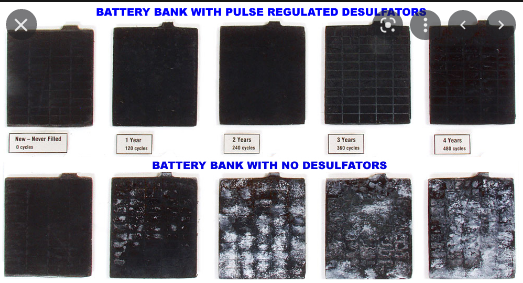Not everyone wants to study batteries to go camping and get this fear planted in their minds with the 50% Rule that make one mistake and it's OVER. OMG, I'm at 50% shut everything off! Fire up the genset! Crap, my batteries are dead, it must've been that ONE TIME I left the fan on and I went below 50%. Oh, the humanity! It's a religion to some, the 50% point is the "usable" number of Ah. If you go below 50% you'll *kill* your battery, cause *severe damage*, and the like. This is completely false and has no technical basis. Some True Believers offer that for "optimum" life this is the target but can't describe what "optimum" means in any practical sense or what the tradeoffs are. Where the myth falls apart is operating the battery such that cycle life will extend beyond calendar life, guaranteeing lost service life, increased cost and decreased utility. Does it make sense to (obsessively) operate a battery so it gets 1500 cycles when you only use a hundred a year? By year 5 or 6 that battery is crapping out and you've left 1000 cycles, a good 2/3's of it's life on the table. The "typical" RV use profile is something like 30 days a year. That's nominally 150 cycles of operation over the battery calendar life which makes DOD an *irrelevant* factor of performance or longevity. Whether someone wants to draw an arbitrary DOD line in the sand as a matter of simplicity or operating margin that's fine, whatever works for them. If at the end of the day you get to run your stuff when you want and you're not unhappy with whatever service life you get then mission accomplished. If as much emphasis were placed on proper charging and maintenance as the 50% Rule there would be a whole lot more batteries out there that lived a long and productive life, irrespective of DOD.
Mark B.
Albuquerque, NM

